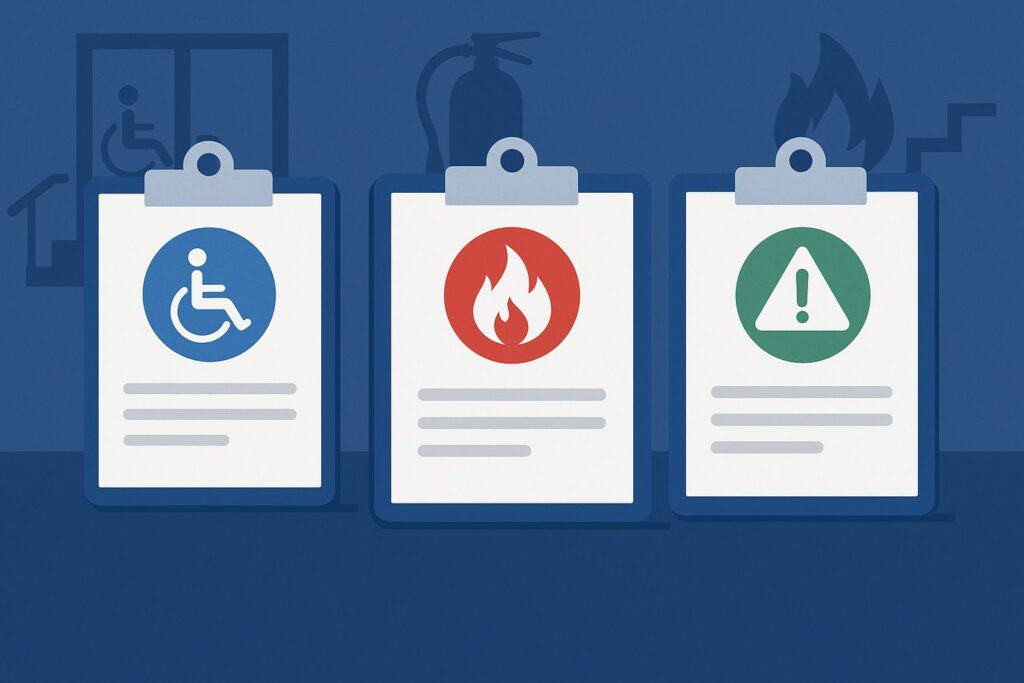
By myhandsanitizershop October 16, 2025
Keeping students, staff, and the public healthy starts with reliable hand sanitizer dispensers that people actually use. In busy hallways, cafeterias, lobbies, and transit hubs, the right dispensers reduce germs, speed up traffic flow, and reinforce a culture of hygiene.
This updated US-focused guide explains what to buy, how to deploy hand sanitizer dispensers, and how to stay compliant with safety, accessibility, and fire codes. It also breaks down refill types, mounting options, and smart features so you can match hand sanitizer dispensers to real-world school and public space needs.
Why Hand Sanitizer Dispensers Matter in Schools and Public Spaces

Crowded places have high “touch density.” Door handles, desks, rails, counters, and kiosks see constant contact. Hand sanitizer dispensers positioned at the right points help interrupt germ transmission between surfaces and hands.
When soap and water aren’t nearby, alcohol-based sanitizer is the recommended alternative, and the Centers for Disease Control and Prevention (CDC) advises at least 60% alcohol in community settings for effectiveness.
That standard keeps hand sanitizer dispensers relevant in classrooms, gymnasiums, cafeterias, auditoriums, administrative offices, and public corridors where sinks are scarce.
Beyond health, hand sanitizer dispensers also impact trust and daily operations. Families expect to see visible hygiene stations in K–12 and campuses. Visitors expect quick, touch-free dispensing in libraries, museums, airports, and civic buildings.
In emergencies, hand sanitizer dispensers sustain operations when handwashing lines are long. And because they’re low cost per use, schools get a strong return on prevention, especially during cold and flu season.
Finally, hand sanitizer dispensers influence behavior. Touch-free models reduce contact points. Consistent placement near entrances, elevators, dining areas, and classrooms creates “habit loops.” Add signage and staff nudges, and usage rises.
The result is fewer missed days, smoother attendance, and less disruption—a big win for education and municipal services.
What to Look For: Core Selection Criteria

Choosing hand sanitizer dispensers isn’t just about a sleek shell. It’s matching device type, refill chemistry, and code compliance. Start with alcohol content: for public and school settings, use products with at least 60% alcohol (ethyl alcohol/ethanol or isopropyl alcohol).
This aligns with current CDC guidance for community use and provides broad efficacy when hands aren’t visibly dirty.
Next, consider touch-free dispensing. Automatic hand sanitizer dispensers reduce cross-contact, encourage frequent use, and dispense consistent doses—critical in high-traffic zones.
Look for precise metering (e.g., 0.8–1.2 mL per shot), battery life that lasts a school term, and low-battery indicators. Manual push dispensers can be effective where budgets are tight, but touch-free boosts adoption.
Durability matters. In schools, hand sanitizer dispensers need robust housings, locking refill compartments, and shatter-resistant windows. For public spaces, vandal-resistant hardware, metal backplates, and secure floor stands protect your investment.
Think about refills: closed-cartridge systems prevent contamination and simplify changeouts; bulk-fill tanks lower cost but require disciplined sanitation.
Plan for ADA accessibility and fire/life safety. Mount operable parts within reach ranges and ensure wall units don’t protrude dangerously into corridors.
Follow NFPA 101 capacity limits for alcohol-based hand-rub (ABHR) dispensers in corridors and rooms. These code details keep hand sanitizer dispensers safe and compliant—a section we unpack below.
Compliance Essentials: ADA, Fire Code, and Safety Considerations

ADA Reach & Protrusion Rules You Should Know
To keep hand sanitizer dispensers accessible, mount controls and activation sensors within ADA reach ranges. For a forward reach, the commonly cited high reach limit is 48 inches above the finished floor, with a low reach down to 15 inches when clear floor space is provided.
If dispensers are mounted over obstructions (like counters), the maximum high forward reach can be lower depending on depth. Keeping hand sanitizer dispensers in these ranges helps all users, including wheelchair users, access them easily.
Watch protrusion: wall-mounted hand sanitizer dispensers along circulation paths shouldn’t extend more than 4 inches into the walkway if the bottom edge is between 27 and 80 inches above the floor.
This helps prevent hazards for people with low vision who use cane detection. Position hand sanitizer dispensers in alcoves or near door jambs when possible, or use floor stands off the main egress path to avoid protrusion conflicts. ADA-compliant placement increases usage and keeps facilities audit-ready.
NFPA 101: Alcohol-Based Hand Rub (ABHR) Dispenser Limits
Because ABHR is flammable, hand sanitizer dispensers must meet NFPA 101 Life Safety Code rules. Key points include maximum dispenser capacities by location: 1.2 liters (0.32 gal) in corridors and areas open to corridors, and 2.0 liters (0.53 gal) in rooms or suites, with spacing and installation conditions intended to reduce fire risk.
Always verify local amendments with your authority having jurisdiction (AHJ); many jurisdictions adopt NFPA 101 or similar language. These limits apply specifically to alcohol-based hand sanitizer dispensers and are particularly important in schools and public buildings.
Avoid installing hand sanitizer dispensers directly above ignition sources, and keep them away from heat-producing equipment. Where sprinkler protection and corridor widths are tight, consider smaller-capacity units, more frequent refills, or placing hand sanitizer dispensers just inside rooms to keep corridor installations within code.
FDA & Safety Reminders
Use hand sanitizer dispensers only with legitimate, labeled sanitizer. The FDA has warned against products contaminated with methanol and reminds users that vapors from alcohol-based sanitizers can cause headaches or dizziness—good reasons to place hand sanitizer dispensers in ventilated areas and post age-appropriate supervision reminders in elementary schools. For the latest recalls and safety notes, check the FDA’s updates and recalls pages.
Dispenser Types: Pros, Cons, and Best Uses
Wall-Mounted Hand Sanitizer Dispensers
Wall-mounted hand sanitizer dispensers are the go-to for corridors, classroom entrances, restrooms, and cafeteria lines. They’re space-efficient, visually consistent, and easy to service during route-based janitorial rounds.
In schools, mounting a wall unit outside every classroom door helps create a reliable “sanitize-in, sanitize-out” routine. Choose tamper-resistant covers and locking cartridges to protect supplies. Confirm ADA reach, protrusion limits, and NFPA 101 capacity guidance when wall-mounting hand sanitizer dispensers in egress paths.
For public spaces, align wall units near natural pause points—entry vestibules, elevator banks, concessions, and ticketing. A bright “Clean Hands Here” decal boosts visibility.
If refurbishing, add backer boards where drywall is weak so hand sanitizer dispensers stay tight and don’t sag under repeated use. Where vandalism risk is high, look for metal housings and keyed access.
Floor-Stand and Pedestal Dispensers
Floor-stand hand sanitizer dispensers shine where walls aren’t available or traffic patterns change, like multi-use lobbies, events, and gymnasium foyers. They set up fast, require no drilling, and can be repositioned for seasonal surges.
Use heavy bases or floor anchors to prevent tipping, and avoid placing stands in egress bottlenecks. For schools, movable stands allow principals to re-aim hand sanitizer dispensers for assemblies, parent nights, and testing days.
Pedestal units are perfect for atriums and libraries when you want a strong visual cue for hygiene without crowding walls.
Choose stands with drip trays to protect floors and with cable channels if power is needed for digital signage or connected counters. Always check line-of-sight to ensure hand sanitizer dispensers are obvious to passersby.
Desktop and Countertop Units
Countertop hand sanitizer dispensers work well at reception, library checkout, and food-service POS stations where staff and visitors interact. They reduce reach distance and make quick sanitizing effortless.
In cafeterias, place them near utensil pickups and self-serve condiment bars. Because countertop hand sanitizer dispensers are within arm’s reach, ensure cartridges are sealed and labeled. Train staff to wipe bases daily and to monitor for spills around cash wraps and kiosks.
Refill Chemistry: Gel, Foam, and Alcohol Strength
Alcohol Percentage and Effectiveness
For schools and public spaces, prioritize hand sanitizer dispensers that dispense alcohol-based formulations meeting the ≥60% alcohol threshold recommended for community settings.
Ethanol formulations between 60–95% are common; isopropanol options typically start around 70%. Alcohol content this high helps inactivate many germs quickly when hands aren’t visibly soiled, which is exactly where hand sanitizer dispensers add the most value outside of sinks. Post clear labels so users know what’s in the dispenser.
Teach proper use: apply enough product to cover all hand surfaces and rub until dry. Volume matters—undersized shots reduce effectiveness. Choose hand sanitizer dispensers with adjustable dose settings so facilities teams can balance efficacy and cost per use.
Gel vs. Foam
Gel refills are familiar and budget-friendly, working in most hand sanitizer dispensers without special nozzles. They’re slightly slower to rub in but cling well, reducing drips. Foam feels lighter, spreads fast, and can be perceived as less sticky—useful for encouraging frequent student use.
Foam may require compatible pumps and can cost more per ounce, but it often reduces waste. Pilot both types in a few locations and track refill intervals and user feedback to choose what your community prefers.
Skin Health & Additives
Frequent use can dry skin, so look for hand sanitizer dispensers that dispense products with humectants like glycerin and skin conditioners formulated for high-frequency use.
The FDA notes that ABHR vapors can cause mild side effects in some users, so good ventilation and kid-safe supervision matter. Always keep hand sanitizer dispensers out of small children’s unsupervised reach and use child-safe messaging in elementary schools.
Top Features That Make a Difference in Schools and Public Spaces
Touch-Free Operation and Precise Dosing
Automatic hand sanitizer dispensers increase compliance because they feel effortless. Infrared sensors reduce cross-contact and deliver consistent dosing, improving both hygiene and cost control.
Select models that allow 2–3 dose settings, so you can fine-tune output for different locations, from kindergarten classrooms to transit hubs.
Clear Windows, Low-Refill Alerts, and Locking Housings
Visibility drives reliability. Hand sanitizer dispensers with clear windows let custodians check levels at a glance during rounds. Smart models offer audible beeps or LEDs when refills or batteries run low. In public buildings, choose locking housings and keyed cartridges to deter tampering and product theft.
Battery Life and Power Options
Look for hand sanitizer dispensers rated for thousands of activations on a set of AA or C batteries. In heavy-use areas, consider plug-in power or hybrid options to avoid mid-day outages.
Place extra battery sets on the custodial cart and schedule preventive swaps every term. Using consistent models across a campus simplifies spares and training.
Drip Trays, Splash Guards, and Easy Cleaning
Adding drip trays keeps floors safer and housekeeping easier, especially under foam-heavy hand sanitizer dispensers. Smooth, wipeable surfaces and sealed seams resist grime. Choose finishes that hide fingerprints in public lobbies yet match school color schemes where branding matters.
Strategic Placement: Where Dispensers Have the Biggest Impact
Entrances, Transitions, and Bottlenecks
Install hand sanitizer dispensers at building entrances, security checkpoints, vestibules, and bus drop-offs. People expect to sanitize on arrival, so a well-placed stand establishes the routine.
Add units at transitions—outside classrooms, restrooms, cafeterias, gyms, and auditoriums—so students sanitize when they move between activities. Supplement with signage reminding users to choose soap and water when hands are visibly dirty, with sanitizer as the next best option.
Food-Service and Library Zones
In cafeterias and concession areas, place hand sanitizer dispensers near tray pickup, utensil stations, and exits. In libraries, position them by entrances and circulation desks where device sharing and book handling are frequent. Countertop units near self-checkout keep queues moving.
Public Interfaces: Kiosks, Ticketing, and Elevators
Add hand sanitizer dispensers near kiosks, vending machines, ticket windows, and elevator banks. These high-touch, high-turnover points benefit from clear visual prompts.
Avoid blocking egress and comply with reach and protrusion rules when wall-mounting. For elevators, position stands in lobbies rather than in the cab to stay code-friendly.
Maintenance, Monitoring, and Cost Control
Refill Planning and Route-Based Service
Create a refill schedule that matches traffic patterns. High-use hand sanitizer dispensers at main entrances may need daily checks, while classroom units might be fine twice weekly. Use a color dot or QR code on each dispenser to log service dates. Track consumption per location to forecast budgeting and prevent outages during flu season.
Compatibility and Cross-Brand Risks
Closed-cartridge hand sanitizer dispensers reduce contamination risk and simplify storage, but they lock you into specific refill SKUs. If you choose bulk-fill hand sanitizer dispensers, train staff on safe refill handling and container sanitation.
Never top off unknown products into a partially filled tank—mixing formulas can impair efficacy and clog pumps. Stick with labeled, legitimate sanitizer and watch for FDA recall notices.
Cleaning, Vandal Resistance, and Spare Parts
Wipe housings daily and disinfect touchpoints around manual dispensers. In public spaces, consider vandal-resistant covers and anchorable stands. Keep spare pumps, keys, and battery doors on hand. Standardize one or two hand sanitizer dispensers across the district or department to simplify training and inventory.
Buying Guide: Matching Dispensers to Real-World Scenarios
Elementary and Middle Schools
For younger students, choose touch-free hand sanitizer dispensers with moderate dosing and humectant-rich sanitizer. Mount at ADA-compliant heights to support independence, and add visual cues like footprints on the floor.
Use drip trays to protect floors where kids may linger. Place hand sanitizer dispensers at classroom doors, library entries, and cafeteria lines. Staff should supervise use in lower grades and store bulk refills away from children.
High Schools, Colleges, and Stadiums
Traffic volumes are high, so battery life, cartridge size, and vandal resistance matter. Use a mix of wall-mounted and floor-stand hand sanitizer dispensers in concourses and near elevators.
Opt for fast-dry foam where adoption is lagging; students respond to products that feel clean, not sticky. For sports events and performances, deploy extra stands at temporary choke points and retrieve them afterward.
Public Libraries, City Halls, and Transit Hubs
Choose highly visible, touch-free hand sanitizer dispensers with large windows and locking housings. The place stands by entrances, information desks, and fare machines.
In transit hubs, reinforce wayfinding with decals and overhead signage. For city facilities, keep procurement standardized across departments to simplify cartridge sourcing and reduce costs.
Smart & Connected Options: Are They Worth It?
Connected hand sanitizer dispensers with IoT sensors can alert staff when levels are low, track activations, and guide route planning. In a large district or city portfolio, data helps allocate labor and predict spikes.
Facilities managers can compare usage across wings and time slots, ensuring hand sanitizer dispensers never run dry during peak traffic. However, factor subscription fees, battery draw, and Wi-Fi coverage into total cost of ownership.
If budgets are tight, try a pilot in one high-traffic school or building. Compare outage minutes, labor time per round, and refill waste against traditional hand sanitizer dispensers. If uptime and labor efficiency improve, expand gradually.
Keep data private and avoid collecting any personal information—only aggregate usage signals are needed.
Sustainability and Total Cost of Ownership
Refill strategy drives cost and waste. Cartridge systems reduce contamination and product waste; bulk systems cut packaging but require strong hygiene discipline.
Look for hand sanitizer dispensers with recyclable cartridges and concentrated shipping where possible. Train staff to fully empty cartridges before disposal and to store refills in cool, ventilated areas away from heat sources due to alcohol flammability concerns referenced in life-safety codes.
Extend lifespan through preventative maintenance: periodic pump lubrication if supported by the manufacturer, seal checks, and battery changes on a set calendar. Choose hand sanitizer dispensers with available spare parts and multi-year warranties. The cheapest unit rarely wins if it fails mid-season or lacks support.
Quick Compliance Checklist (US-Focused)
- Use alcohol-based sanitizer ≥60% for community settings when soap and water aren’t available. Post labels near hand sanitizer dispensers as reminders.
- Mount within ADA reach; avoid hazardous protrusions into corridors. Place hand sanitizer dispensers in alcoves or on stands where corridor width is limited.
- Follow NFPA 101 ABHR dispenser capacity and placement rules, especially in corridors and areas open to corridors. Verify with your local AHJ.
- Keep units ventilated and supervise young children’s use; be aware of FDA safety notes and recall updates.
FAQs
Q1: Should we prioritize touch-free hand sanitizer dispensers over manual models?
Answer: Yes. Touch-free hand sanitizer dispensers reduce cross-contact and increase usage because they’re effortless. They also meter consistent doses, which supports CDC advice to use enough product to cover all surfaces and rub until dry. For entryways and cafeterias, touch-free units are the practical standard.
Q2: What alcohol percentage should our refills have?
Answer: For community settings like schools and public buildings, choose ≥60% alcohol. This aligns with CDC guidance when soap and water aren’t available. Label hand sanitizer dispensers clearly so users know the product meets that threshold.
Q3: How high should we mount wall dispensers to be ADA-friendly?
Answer: Place activation areas within the ADA high forward reach range—commonly referenced at 48 inches max—and respect protrusion limits so hand sanitizer dispensers don’t extend more than 4 inches into circulation paths. Consider side-reach scenarios and obstructions when locating units.
Q4: Are there fire code limits for dispenser size in corridors?
Answer: Yes. NFPA 101 sets maximum ABHR dispenser capacities and other conditions. A widely cited limit is 1.2 liters per dispenser in corridors and areas open to corridors, and 2.0 liters in rooms or suites, along with spacing and installation rules. Check with your AHJ for local adoption and details.
Q5: Is foam better than gel?
Answer: Both work when alcohol content is adequate. Foam spreads quickly and feels lighter, which can increase compliance among students. Gel is familiar and cost-effective. Test both in a few locations and let usage data guide which refills your hand sanitizer dispensers should use.
Q6: How do we deter tampering and theft?
Answer: Choose locking housings and closed cartridges for public-facing hand sanitizer dispensers. Use vandal-resistant backplates and place units within staff line-of-sight in lobbies. For floor stands, select heavy bases and consider discreet anchors.
Q7: Do connected/IoT dispensers pay off?
Answer: In larger portfolios, yes. Real-time alerts reduce outages and wasted rounds. Start with a pilot on high-traffic hand sanitizer dispensers, measure uptime and labor savings, and expand if the ROI is clear.
Q8: Are there safety concerns for kids?
Answer: Place hand sanitizer dispensers where adults can supervise young children. Keep bulk refills secured. FDA notes that vapors may cause minor side effects for some people, so ensure good ventilation and teach proper use.
Conclusion
The “best” hand sanitizer dispensers for schools and public spaces are dependable, code-compliant, and easy to use. Start with alcohol-based refills at ≥60%, then choose touch-free hardware that fits your traffic patterns and service model.
Mount within ADA reach, follow NFPA 101 limits in corridors, and place hand sanitizer dispensers at natural choke points like entrances, classroom doors, cafeterias, and elevator banks. Add clear signage, train staff, and log service rounds so dispensers never run dry.
When you match dispenser type, refill chemistry, and placement to real-world behavior, hand sanitizer dispensers become a seamless part of daily routines. That’s how you boost hygiene, reduce absences, and keep schools and public spaces welcoming—one quick sanitize at a time.